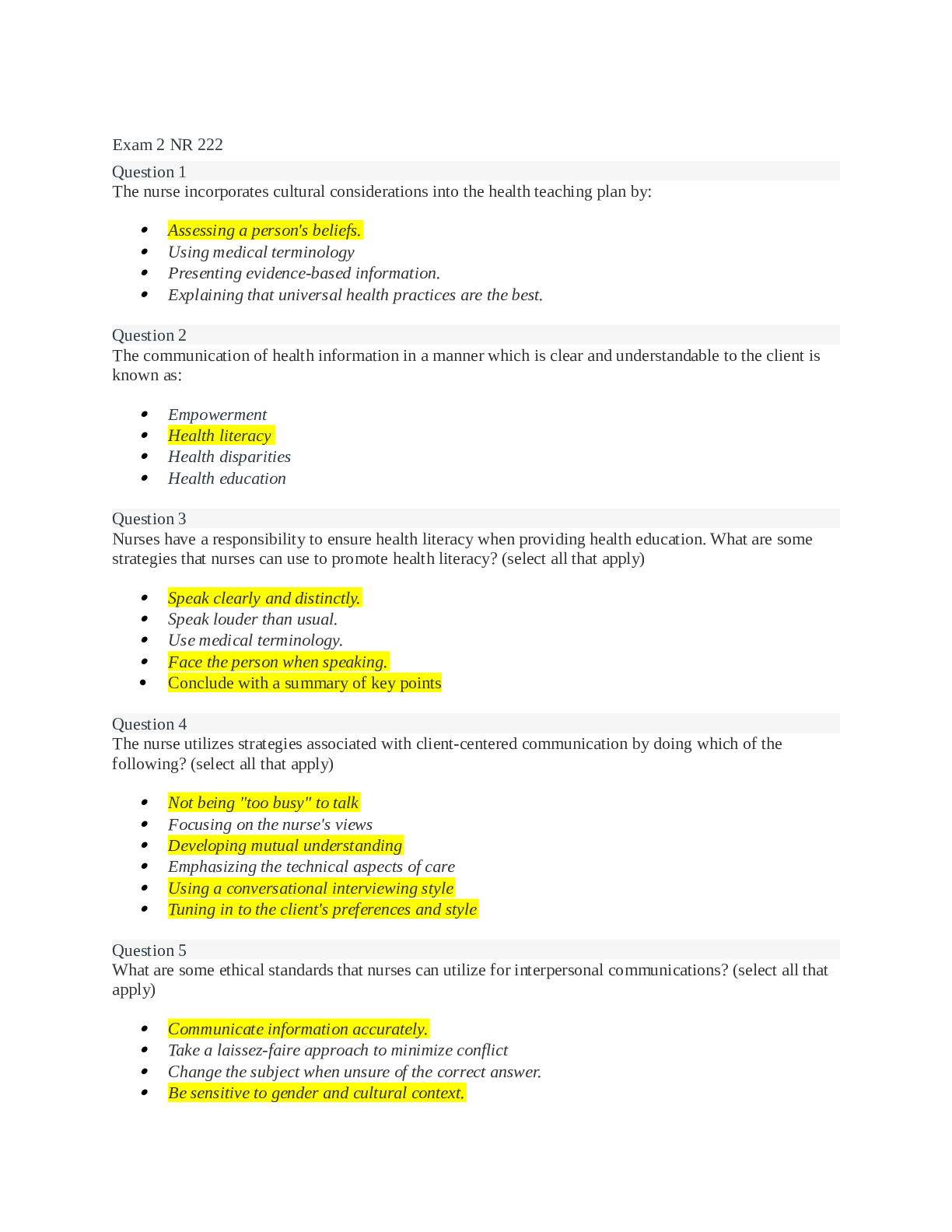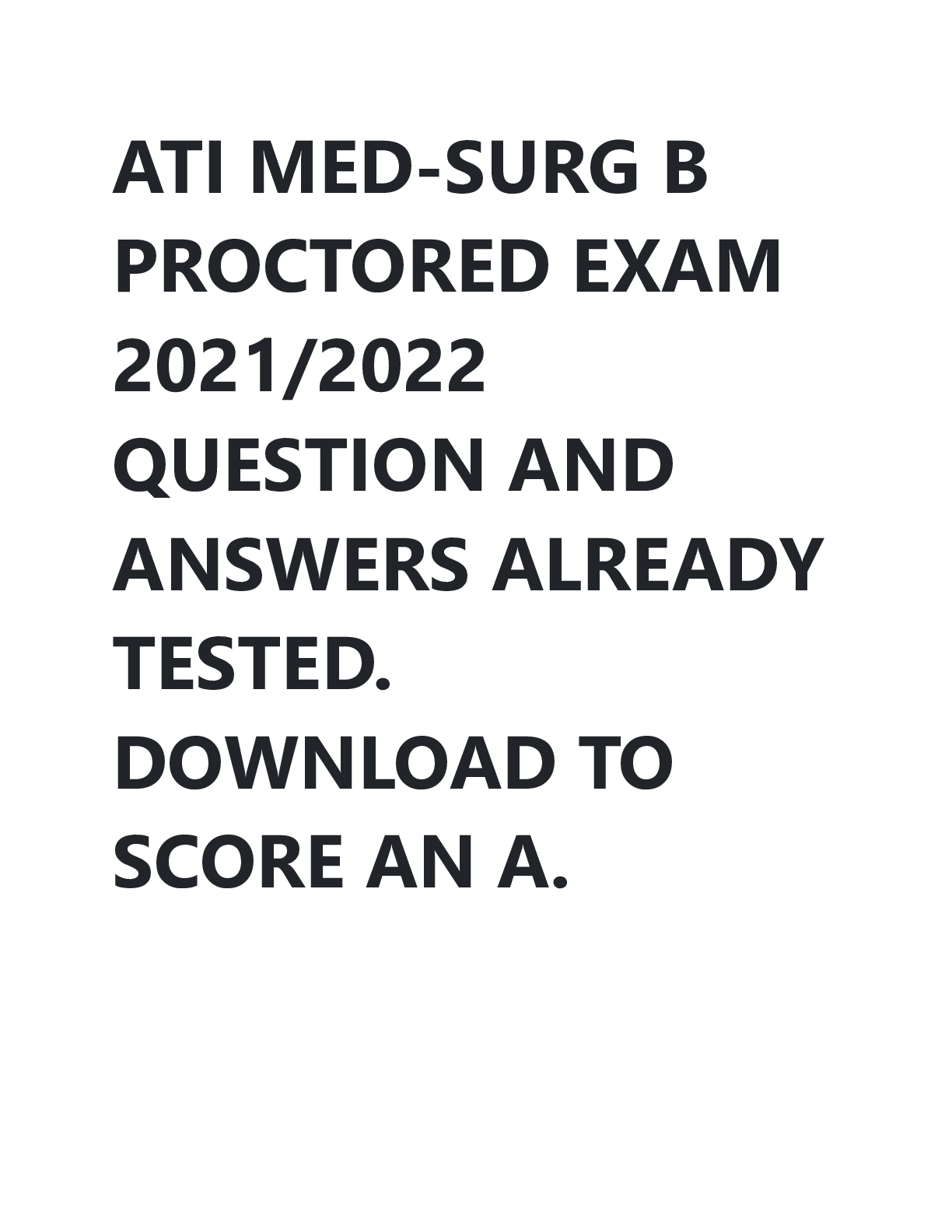Health Care > EXAM > NURS 5334 EXAM 2 STUDY QUESTIONS & ANSWERS, ALL 100% CORRECT (All)
NURS 5334 EXAM 2 STUDY QUESTIONS & ANSWERS, ALL 100% CORRECT
Document Content and Description Below
NURS 5334 EXAM 2 STUDY QUESTIONS & ANSWERS, ALL 100% CORRECT.What are the basic mechanisms by which neuropharmocologic agents act? o Can modify the disease process o Act at the sites of actions whi... ch is the axons versus synapses and steps in synaptic transmission and effects of drugs on the steps of synaptic transmission Transmittter synthesis is the first step in transmission. What are the other 4 steps? o Transmitter storage, transmitter release, receptor binding, and termination of the transmission True or False: Neuropharmacologic drugs have high selectivity. o True—the nervous system uses many different receptor types Information needed: o Type of receptors—through which the drug acts Alpha and beta o Normal responses to the activation of those receptors Agonists vs. antagonists o What the drug in questions does to the receptor function What are the 3 functions of ANS? o Regulates the heart o Regulates the secretory glands, saliva glands, gastric, sweat, and bronchial o It regulates smooth muscles: bronchi, blood vessels, urogenital system, and the GI tract What are the regulatory functions of the parasympathetic NS? o Seven regulatory functions Slowing the heart rate Increasing the gastric secretions Emptying the bladder Emptying the bowel Focusing the eye for near vision, Constricting the pupil Contracting the bronchial smooth muscle o It also regulates the digestion of food, excretion of waste, control of vision and conservation of energy What are the functions of the sympathetic NS? o Regulation of the cardiovascular system Maintaining blood flow to the brain Redistributing blood and compensating for the loss of blood o Regulation of body temperature Regulates blood flow to the skin Promotes the secretion of sweat Induces piloerection (erection of the hair) o Implementation of the fight or flight reaction Increase HR and BP Blood shuts away from the skin and visera Bronchi dilate 1 Pupils dilate Use energy that had been stored What is the baroreceptor reflex? o The receptors near the heart monitor BP changes and send the information to the brain o The brain then activates the Autonomic NS to restore blood pressure to normal o When BP falls, this reflex causes vasoconstriction and increases cardiac output. o When BP rises, it causes vasodilation and reduces cardiac output Where is acetylcholine employed? o Most junctions at the peripheral nervous system Where is epinephrine and norepinephrine released? o Norepinephrine—postganglionic neurons o Epinephrine—adrenal medulla What are the cholinergic receptors mediated by? What are the subtypes? o Receptors that mediate responses to acetylcholine o Subtypes: Nicotinic Muscarinic Whare are adrenergic receptors mediated by? What are the subtypes? o Mediate responses to epinephrine and norepinephrine o Subtypes: Alphas Betas Dopamine What are the functions of each adrenergic subtype? o Alpha 1—vasoconstriction, ejaculation and contraction of the bladder neck, and prostate o Alpha 2—(located in presynaptic junction)—minimal clinical significance o Beta 1—control the heart Increase HR, increase force of contraction and velocity of conduction in the AV node; stimulate renin released in the kidney o Beta 2—bronchial dilation, relaxation of the uterine muscle, vasodilation, glycogenolysis o Dopamine—dilates renal blood vessels Epinephrine can activate all alpha and beta receptors but not dopamine receptors Norepinephrine can activate alpha1, alpha2, and beta receptors but not beta2 or dopamine receptors Dopamine can activate alpha1, beta1 and dopamine receptors Muscarinic agonists mimic the effects of acetylcholine at muscarinic receptors Muscarinic antagonists selectively blood the effects of acetylcholine (and other muscarinic agonists) at muscarinic receptors What are therapeutic uses of Bethanechol? o Urinary retention o Investigational GI uses—off label GI reflux What are actions on smooth muscle, exocrine glands, and eye? o Smooth muscle— 2 lung by causing constriction of the bronchi the GI system by increasing tone and motility the bladder by contraction of the detrusor muscle relaxation of the trigone and sphincter o Exocrine glands—increased sweating salivation, bronchial secretions and secretion of gastric acid o Eye—causes miosis and contraction of the ciliary muscle Adverse Effects? o Hypotension o Abdominal cramps o Diarrhea o Increased salivation o Exacerbate asthma o Can cause dysrhythmias in patients with hyperthyroidism What are cevimeline, pilocarpine, and acetylcholine used for? o Cevimeline—treat dry mouth and Sjogren’s syndrome o Pilocarpine—topical treatment of glaucoma as well as dry mouth from Sjogren’s syndrome o Acetylcholine—rapid myosis after delivery and cataract surgery Anticholinergics o Competitively block the actions of acetylcholine as muscarinic receptors o Most muscarinic receptors are on structures innervated by parasympathetic nerves o Also known as parasympatholytic drugs, antimuscarinic drugs, muscarinic blockers, and anticholinergic drugs o Anticholinergic drugs: produce selective blockade of the muscarinic receptors (not all cholinergic receptors) o Can’t pee, see, spit or shit What are the pharmacologic effects of atropine? o The heart—increases in rate o The exocrine glands—decrease secretions o Smooth muscle—relaxes the bronchi, decreases the tone of the urinary bladder detrusor and decreases the tone motility of the GI tract o Mydriasis and cycloplegia in the eyes o Mild excitation to hallucinations and delirium in the Central Nervous system Therapeutic Uses of Atropine? o Pre-anesthetic medication to help dry up secretions o Disorders of the eye o In codes for bradycardia, intestinal hypertonicity and hypermotility o Muscarinic agonist poisoning o Peptic ulcer disease o Asthma o Biliary colic Side effects of Atropine 3 o Dry mouth o Blurred vision o Photophobia o Elevation of interocular pressure o Urinary retention o Constipation anhidrosis o Tachycardia o Asthma [Show More]
Last updated: 1 year ago
Preview 1 out of 34 pages
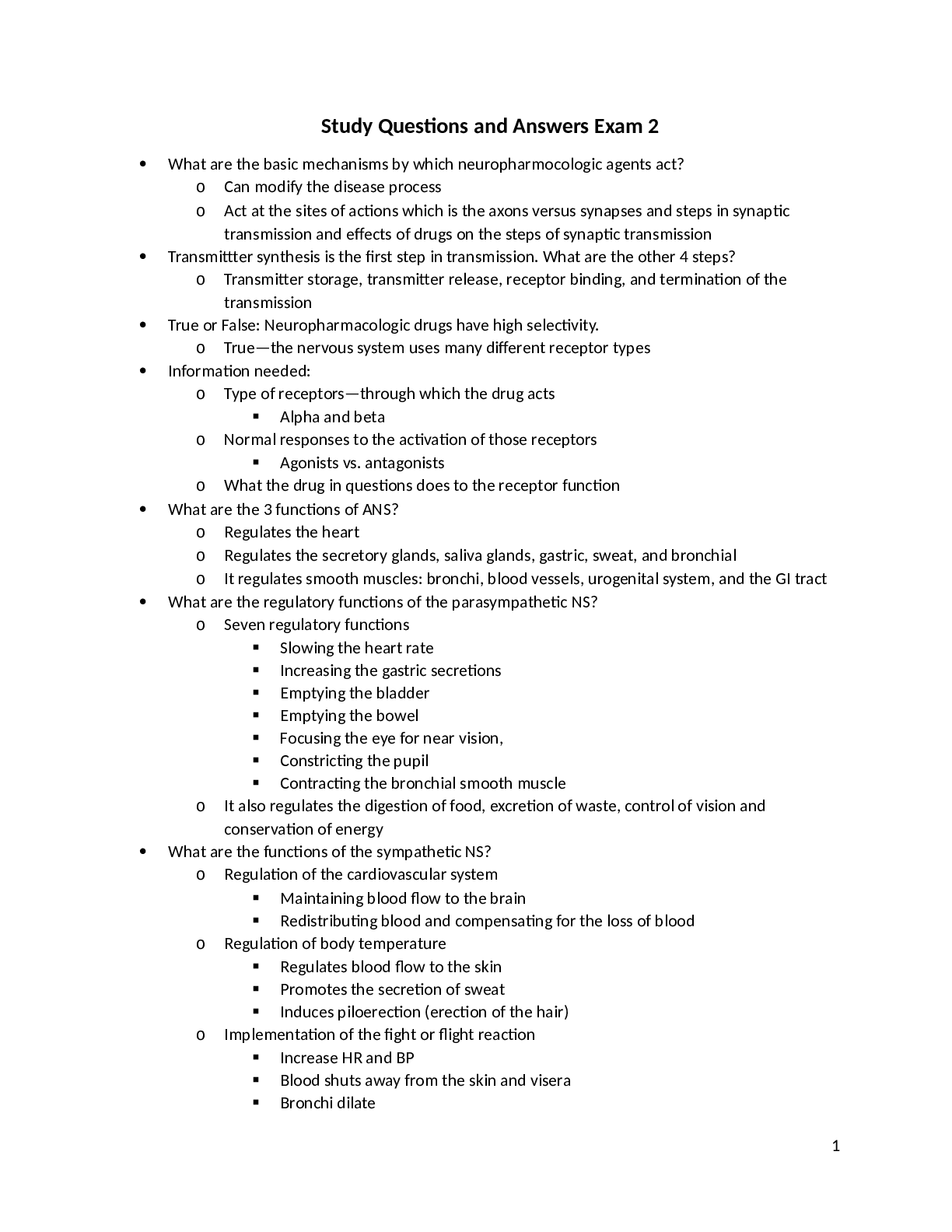
Reviews( 0 )
Document information
Connected school, study & course
About the document
Uploaded On
Jul 31, 2022
Number of pages
34
Written in
Additional information
This document has been written for:
Uploaded
Jul 31, 2022
Downloads
0
Views
44

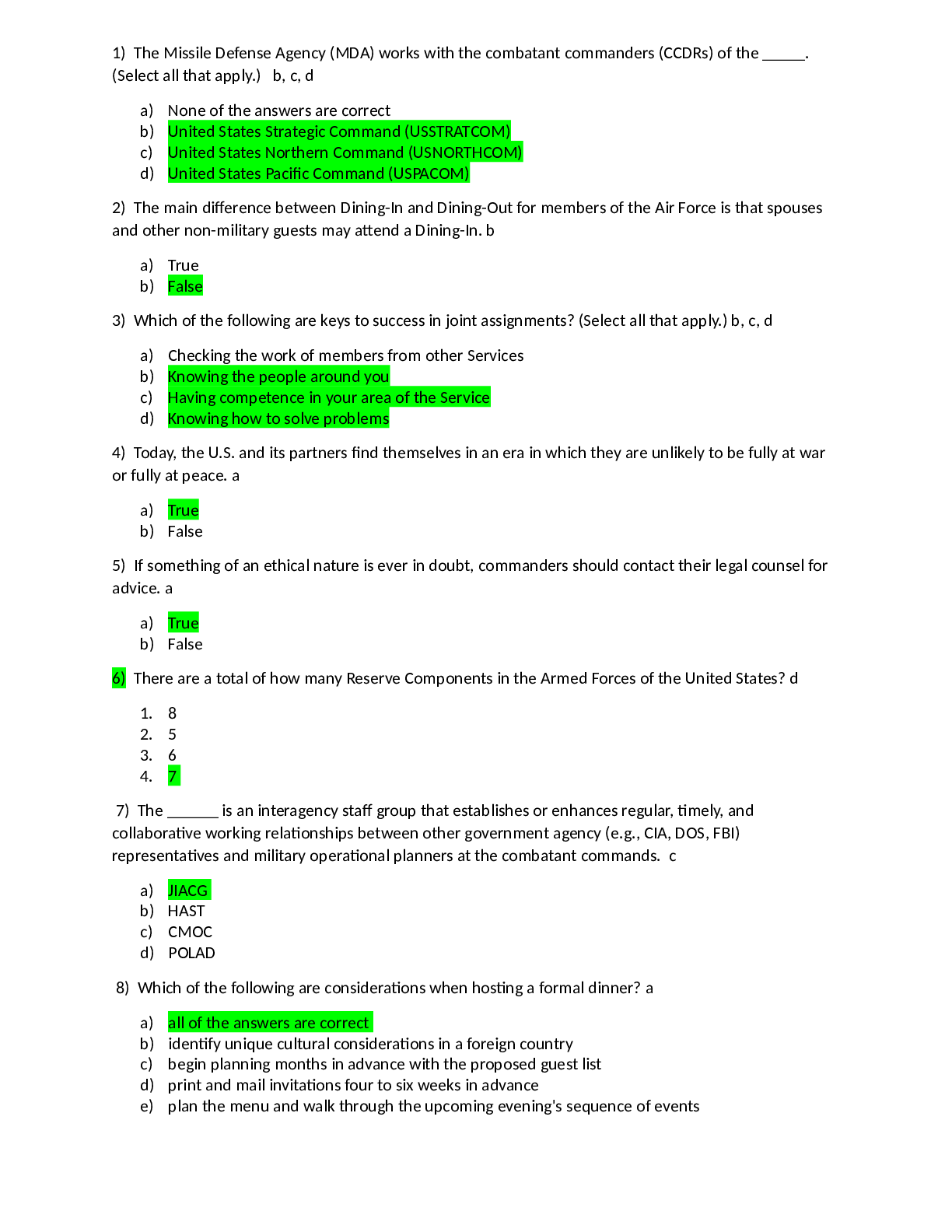
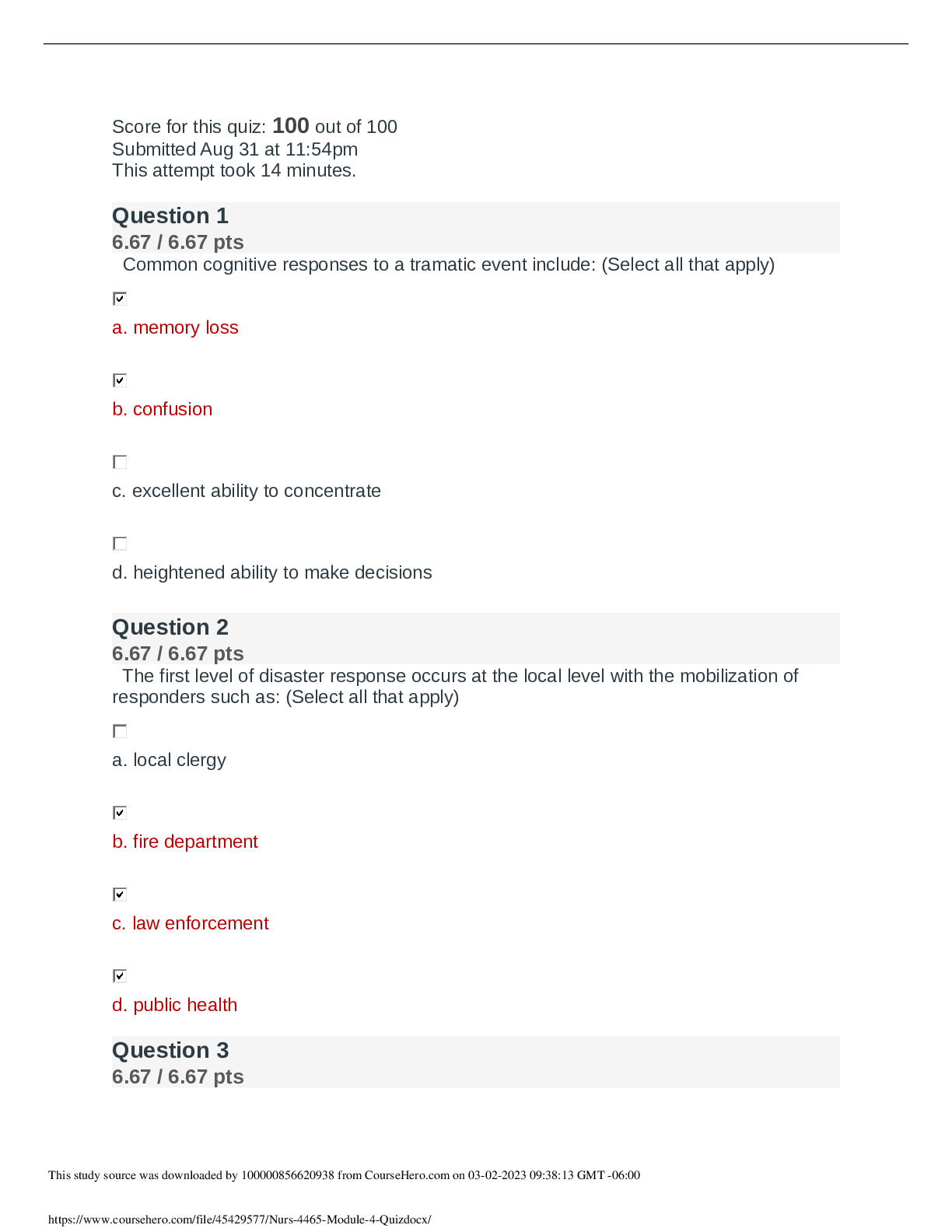
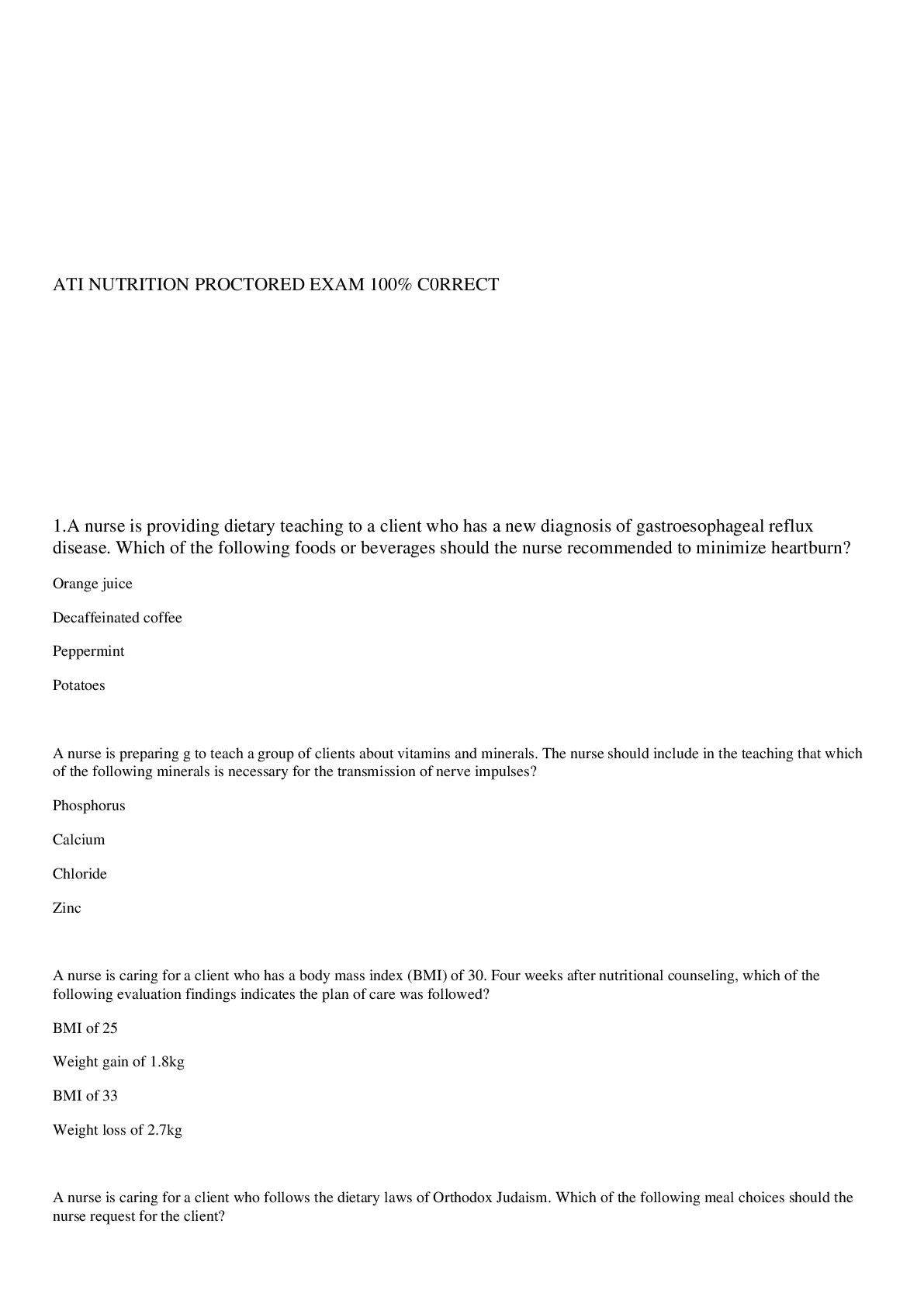
.png)
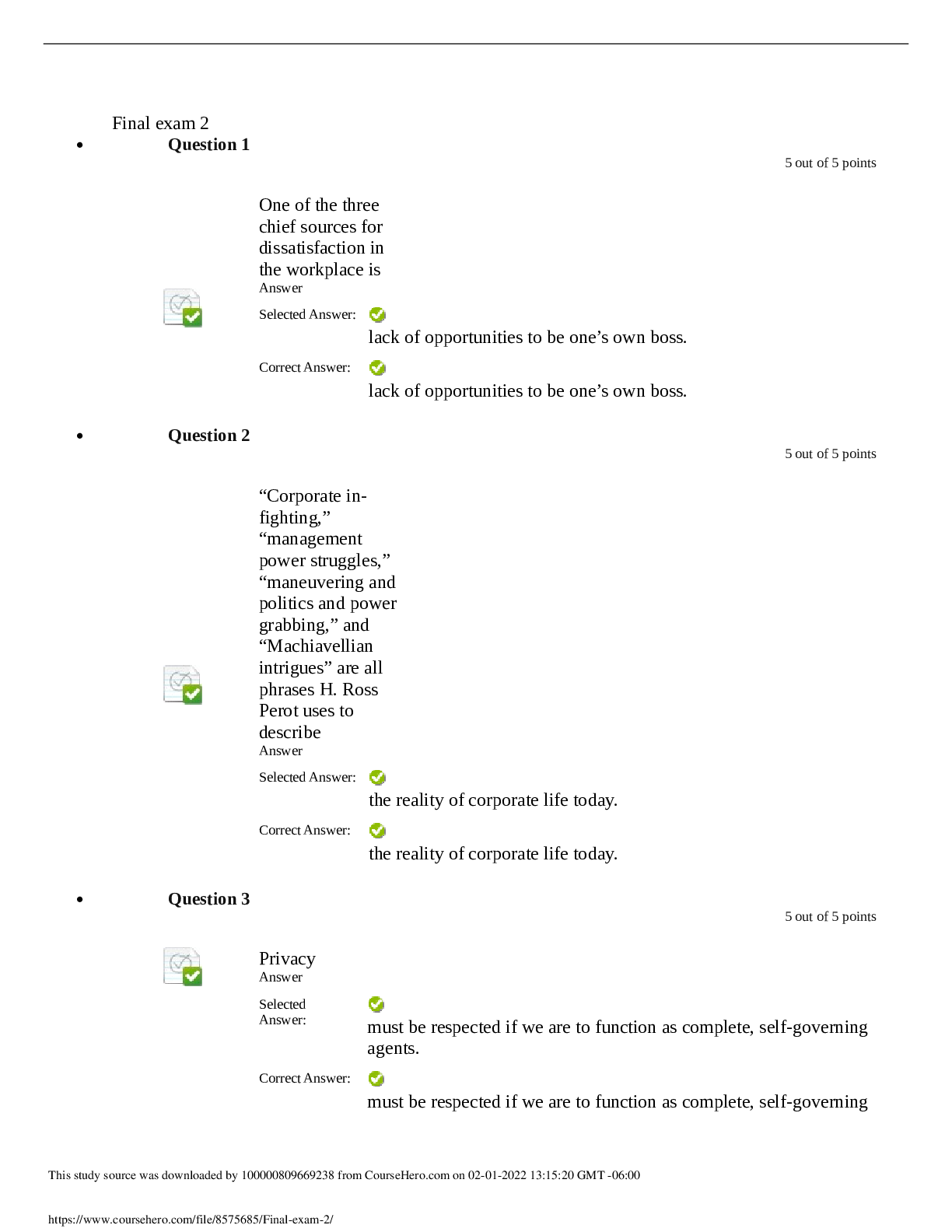
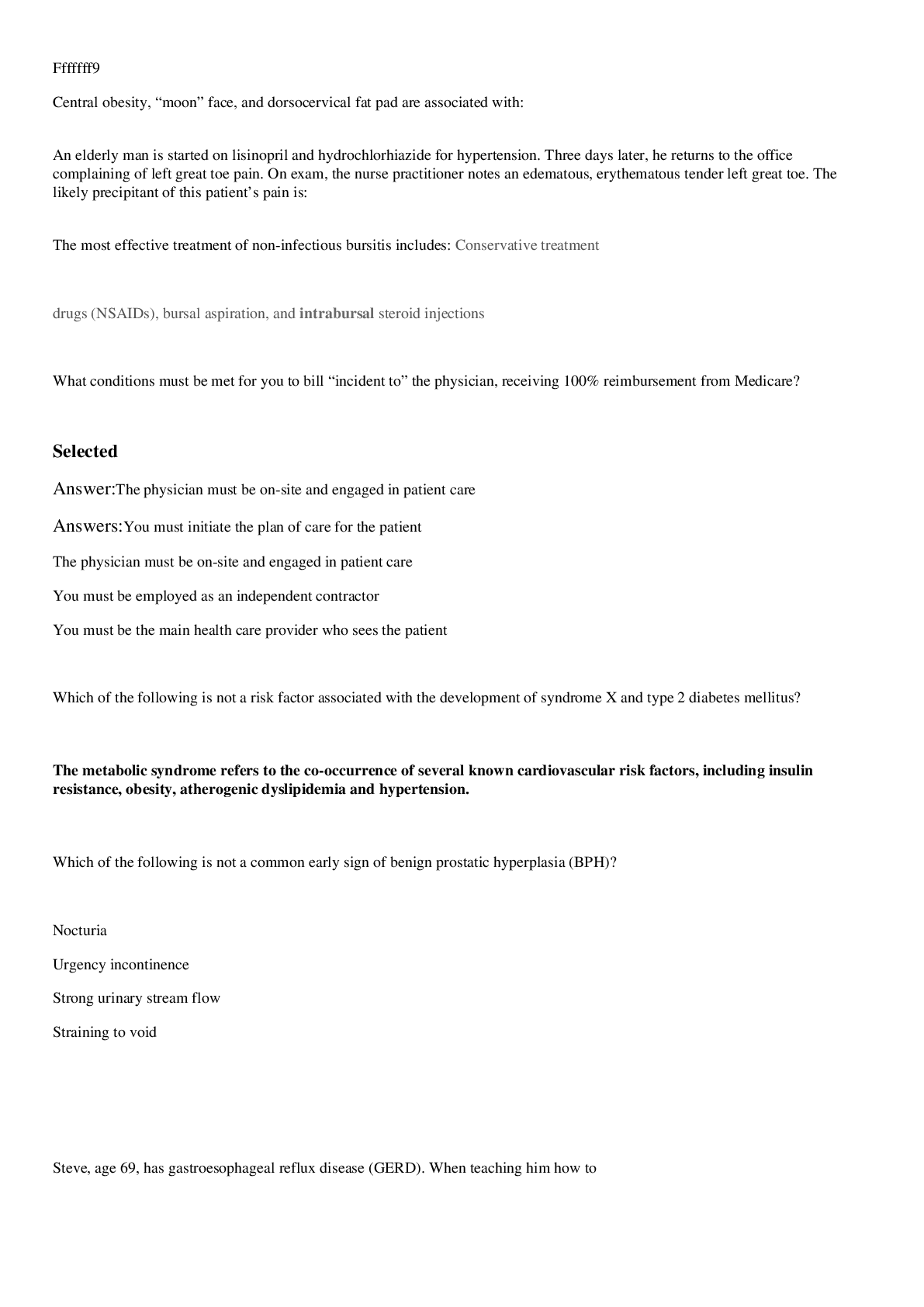
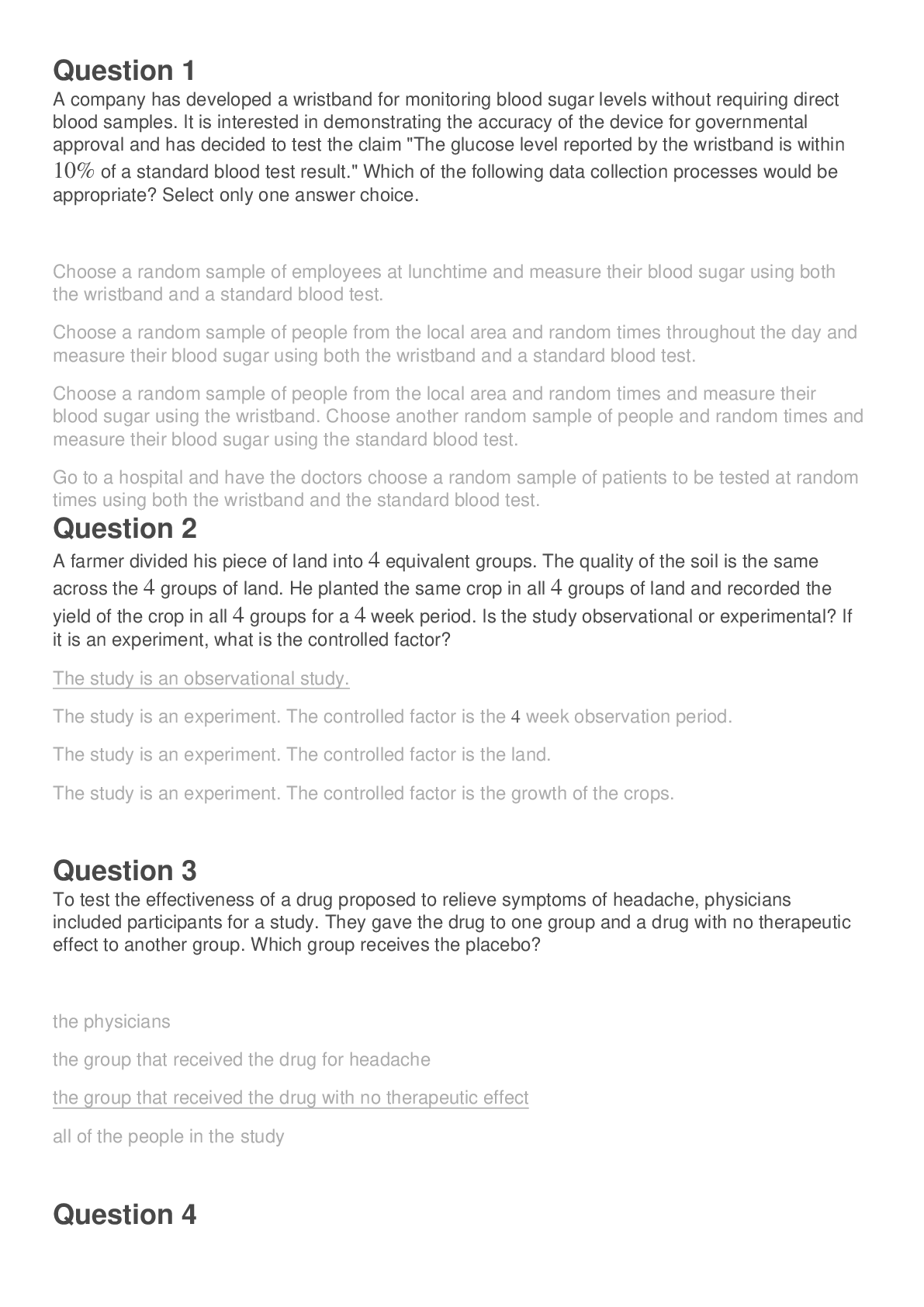
.png)
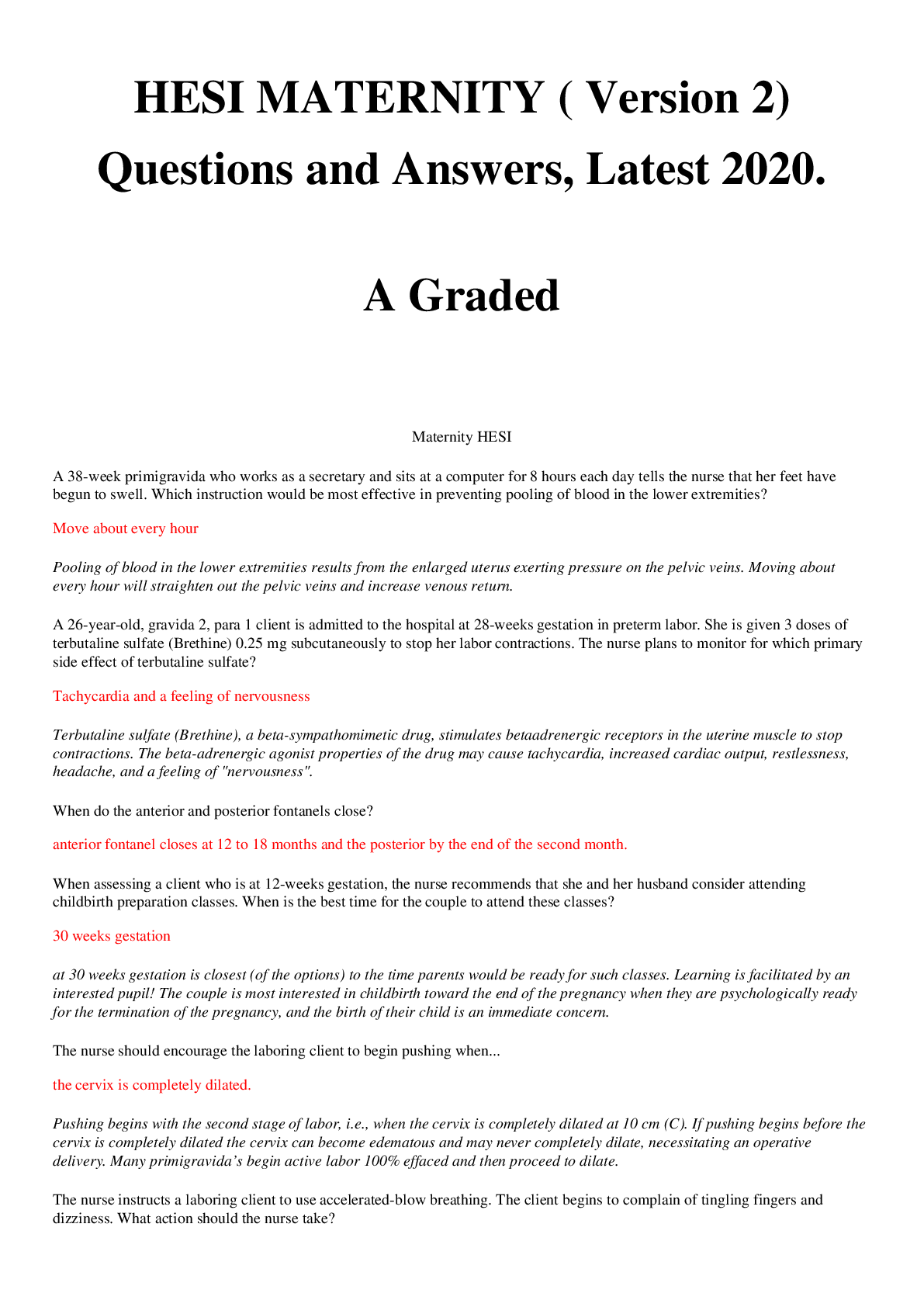
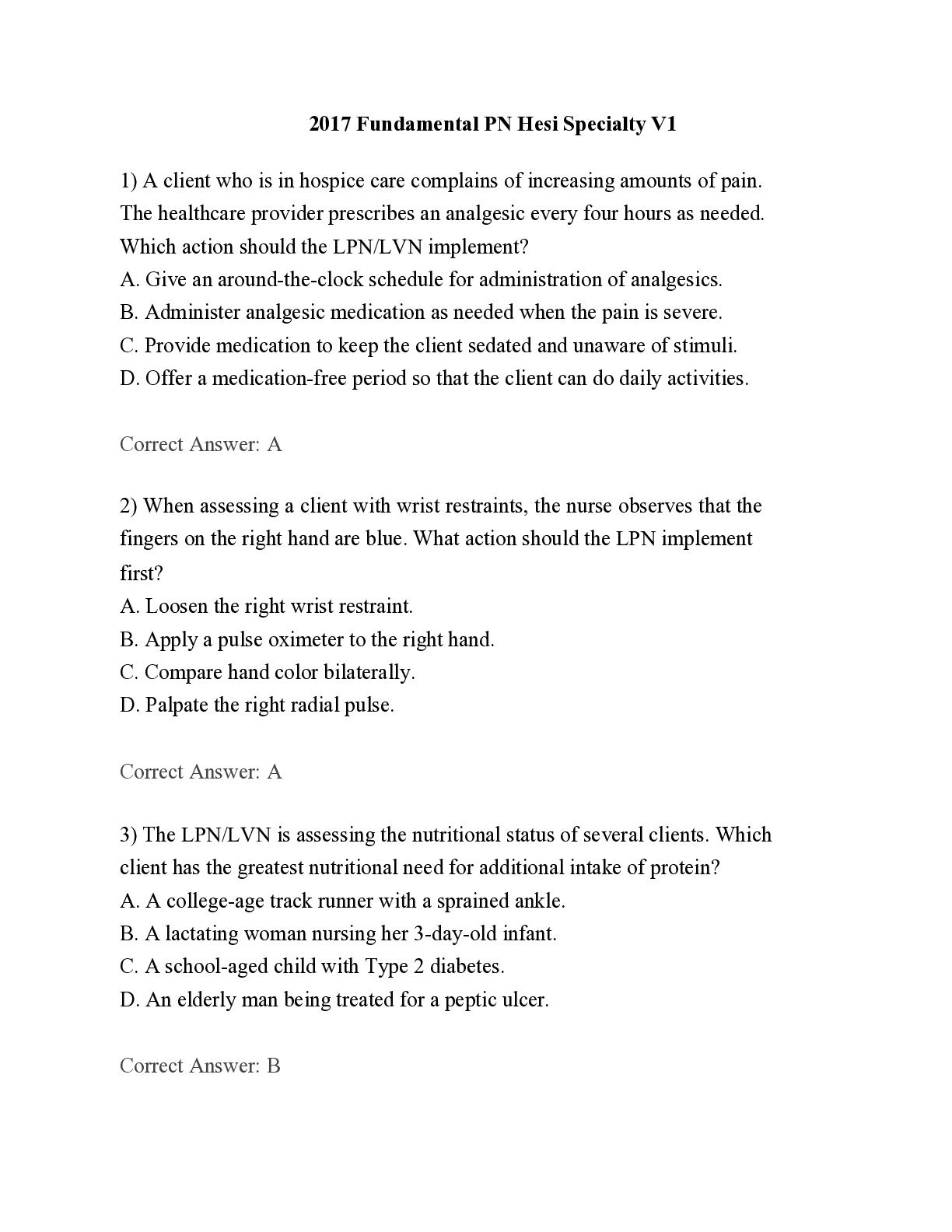
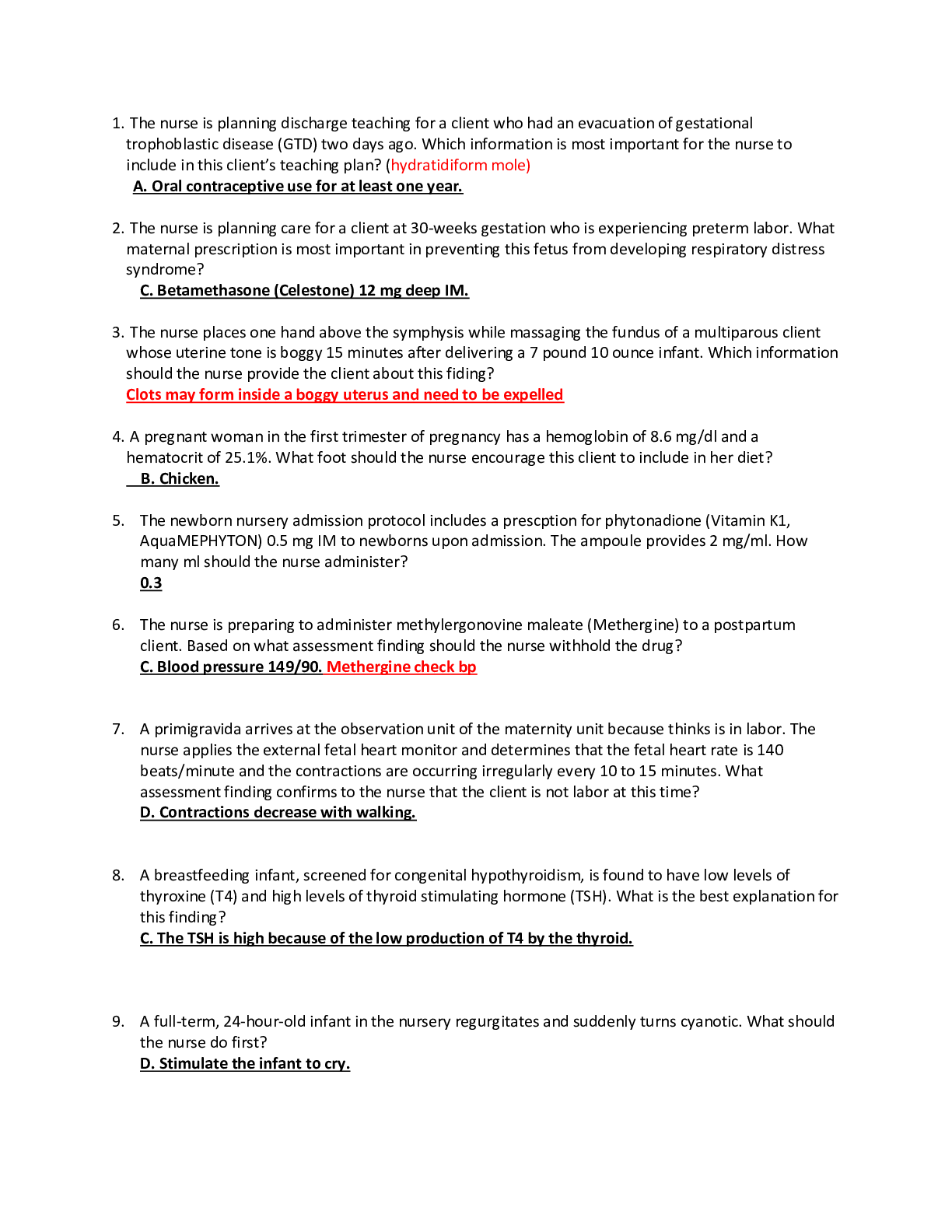
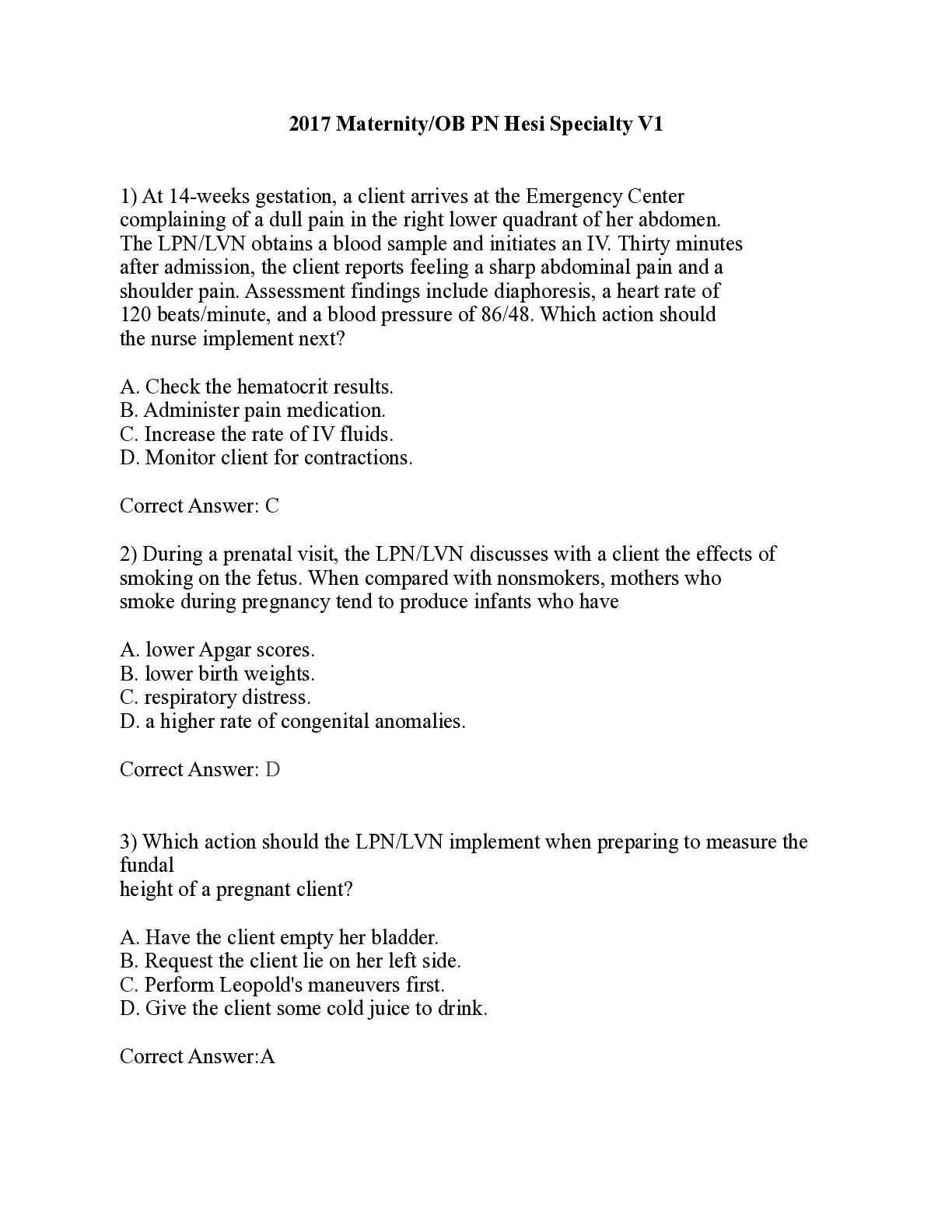
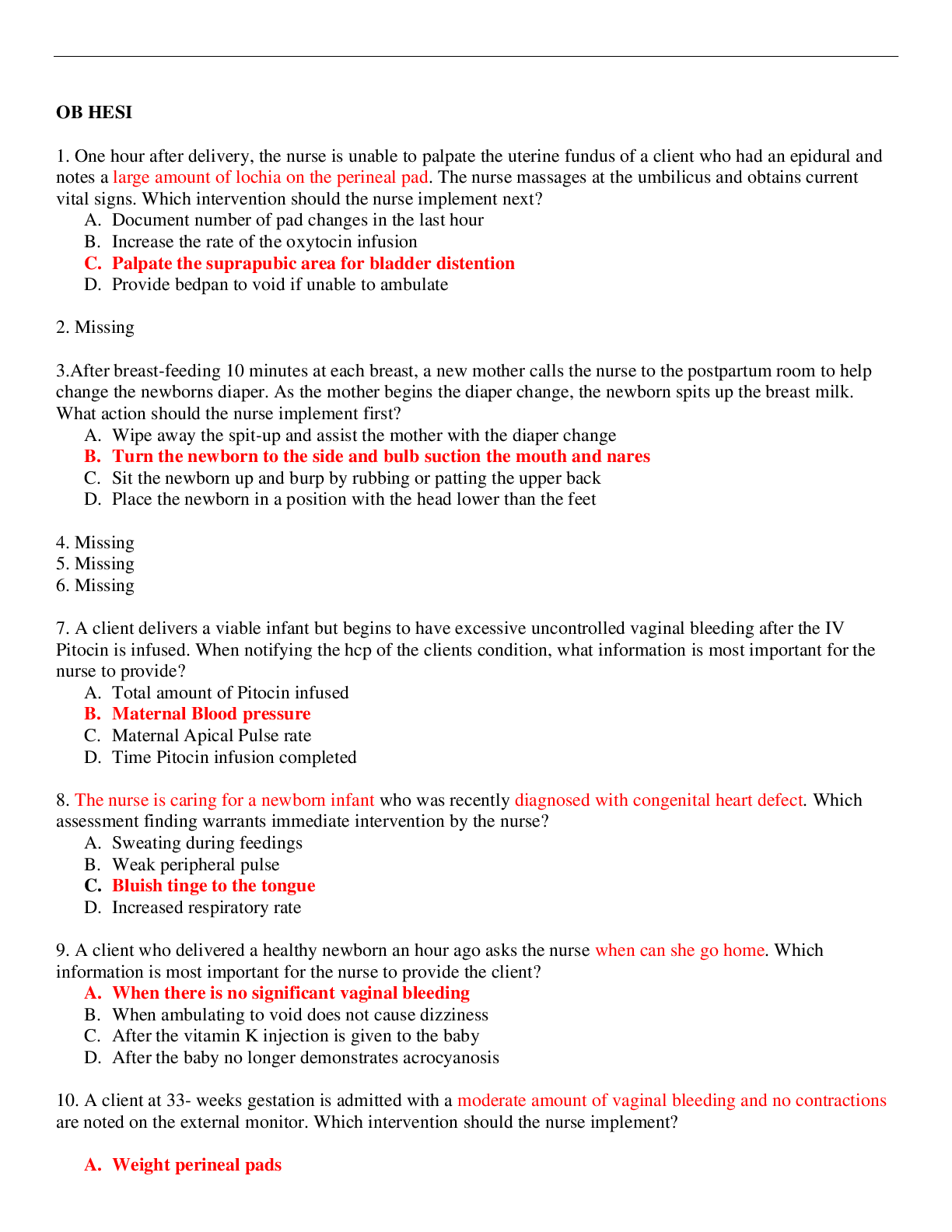
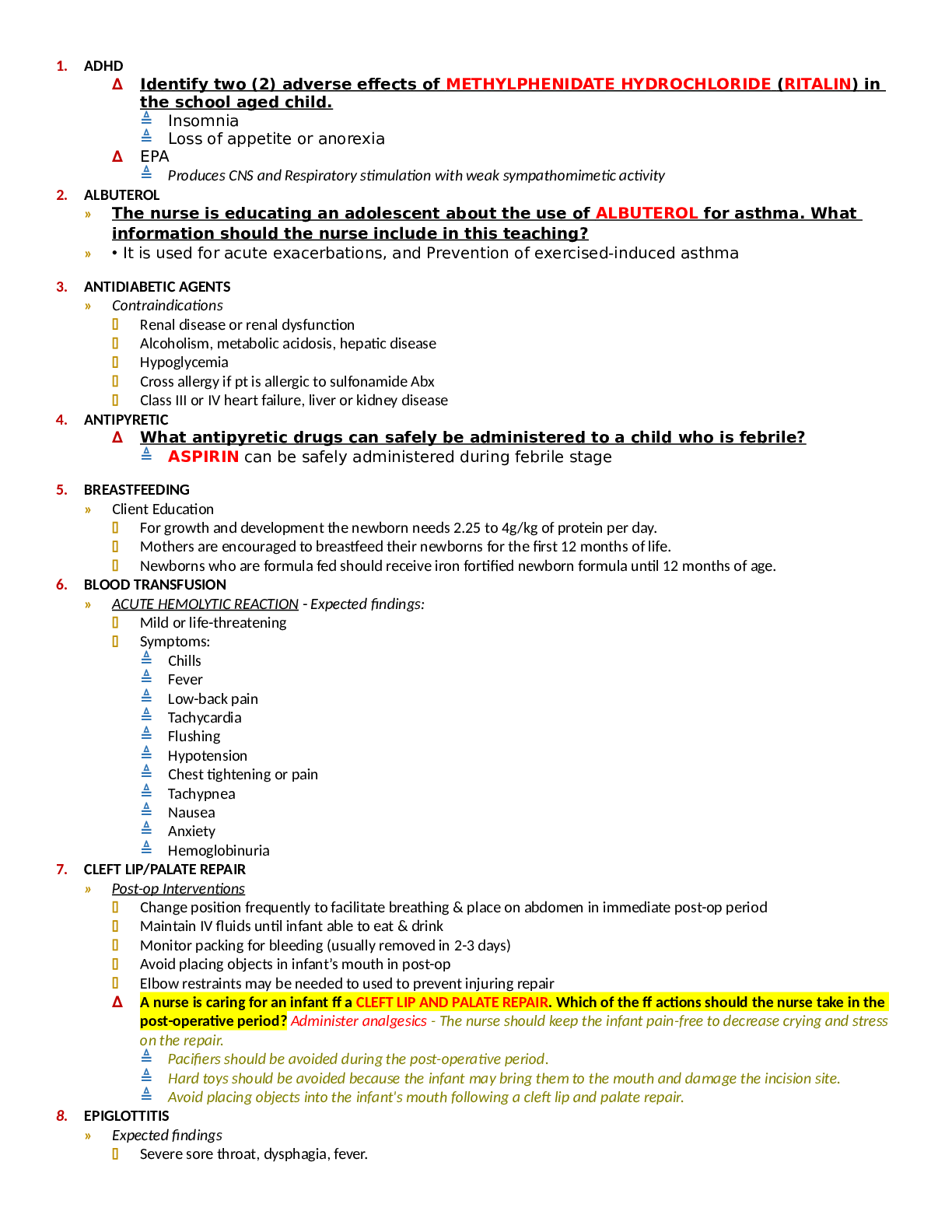
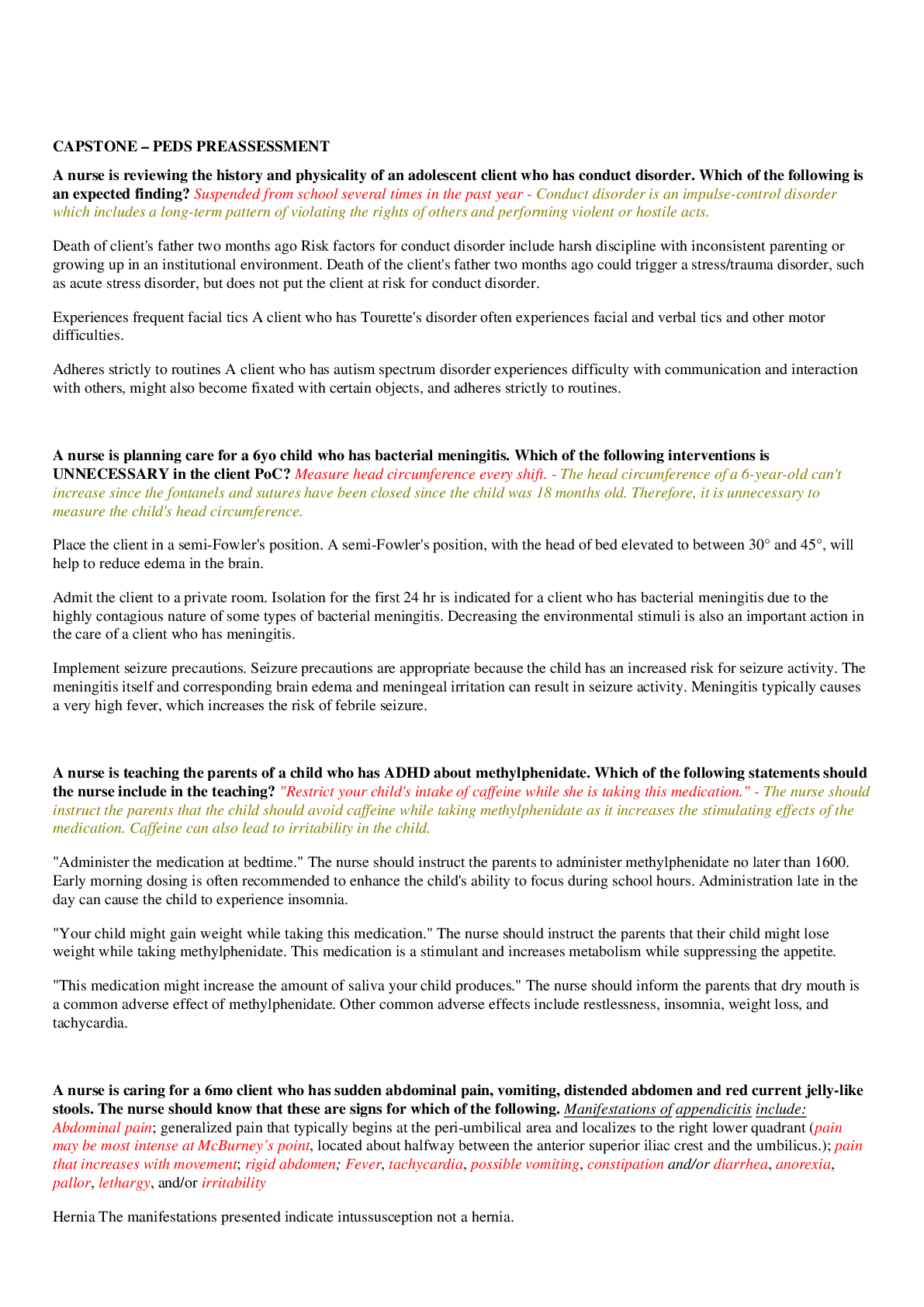

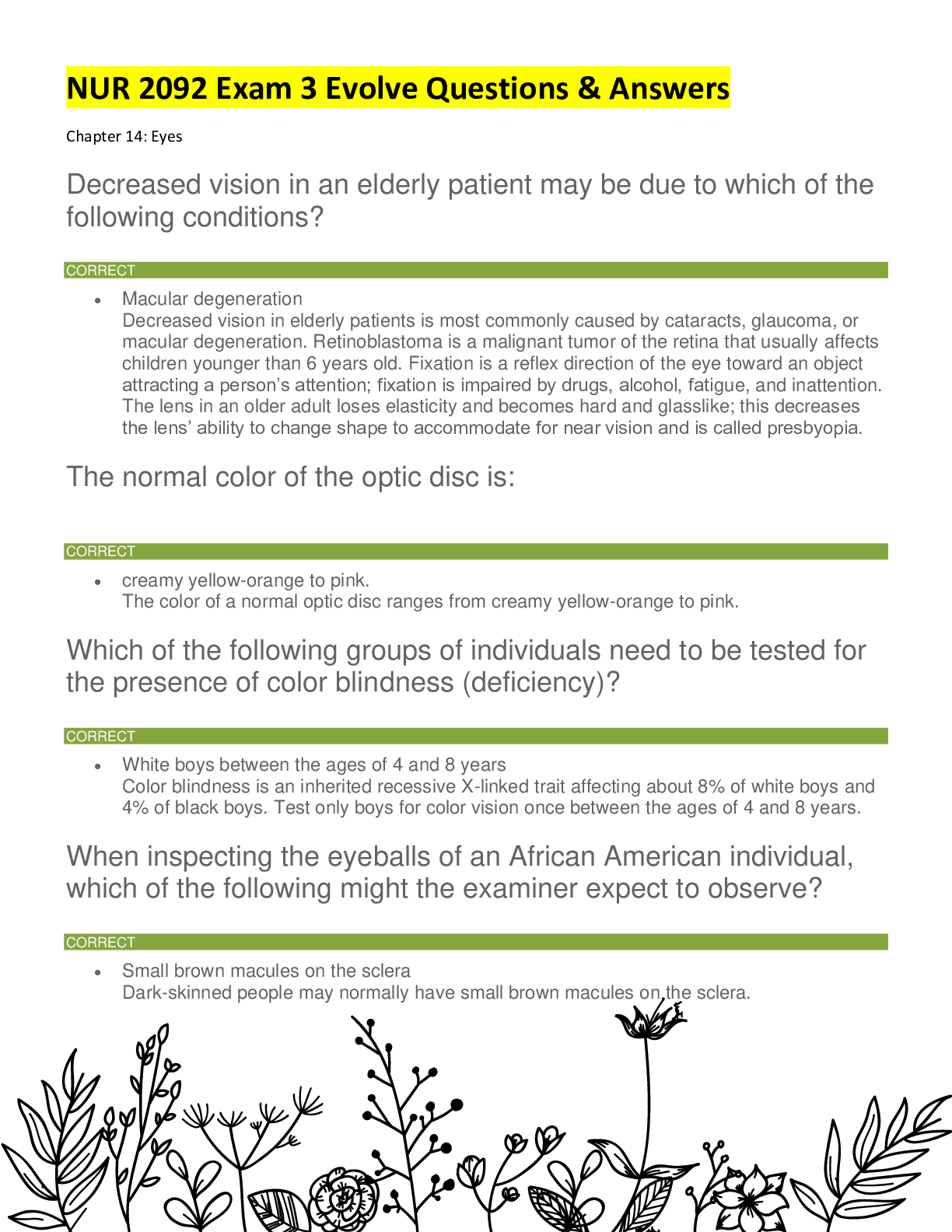
.png)
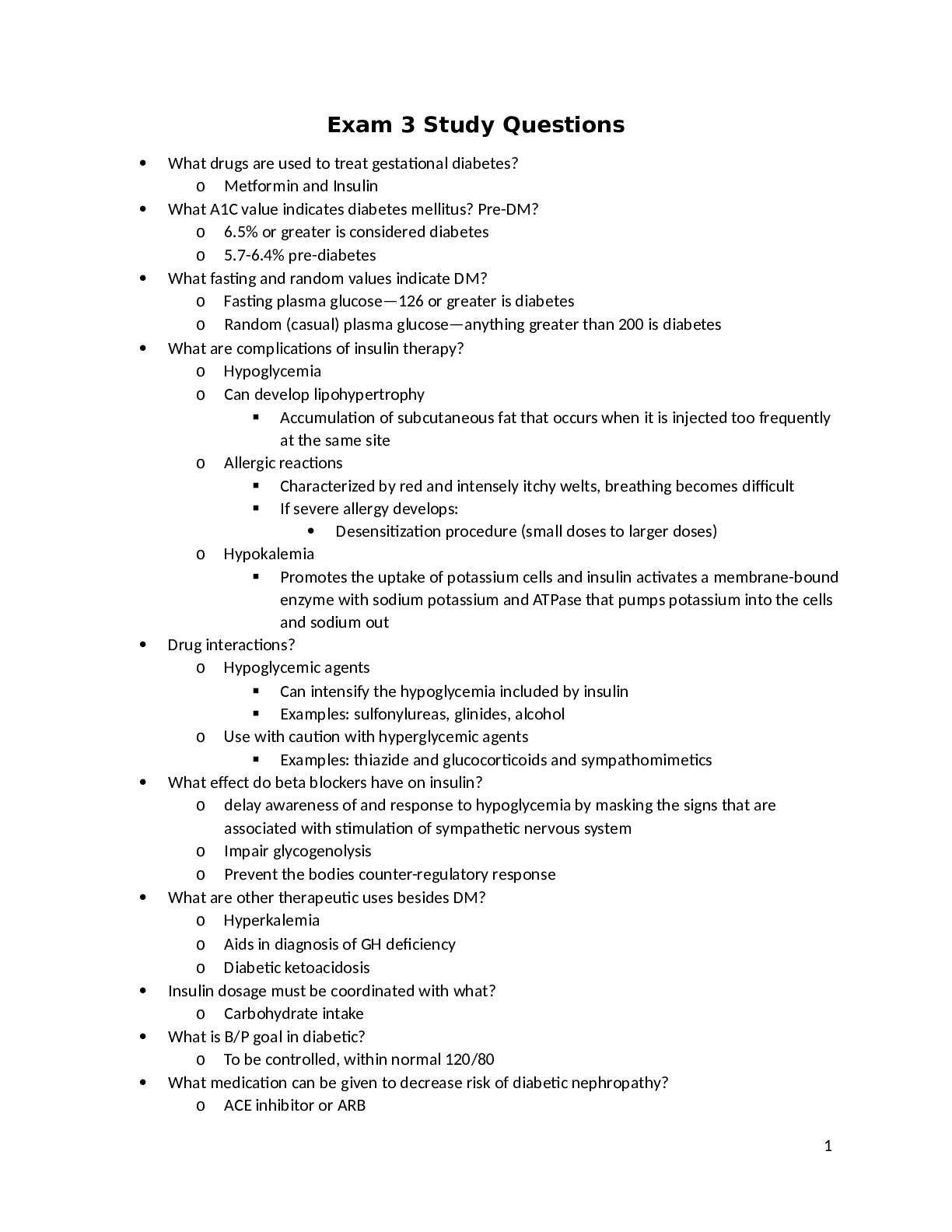

 2022 2023, Complete solutions (A+ guide).png)
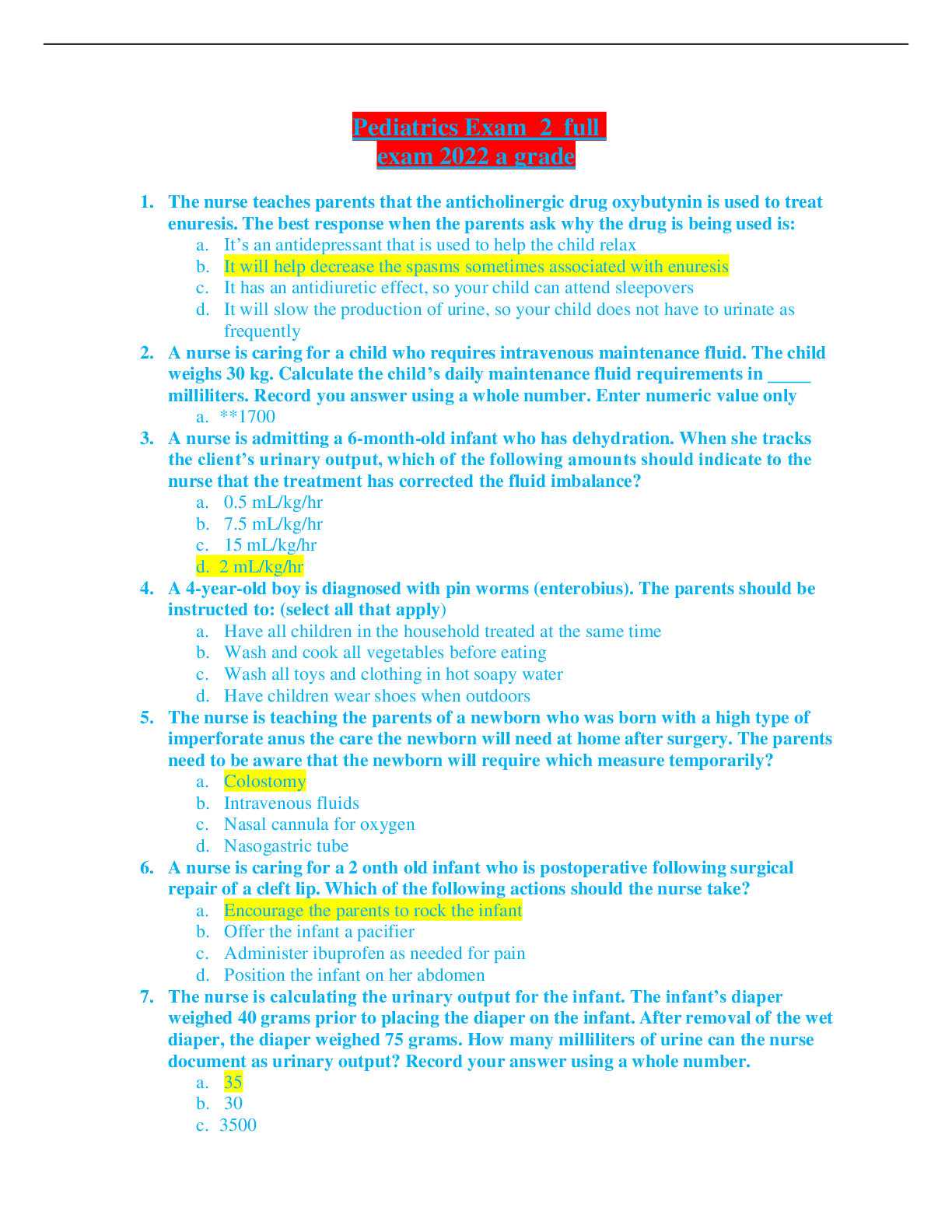
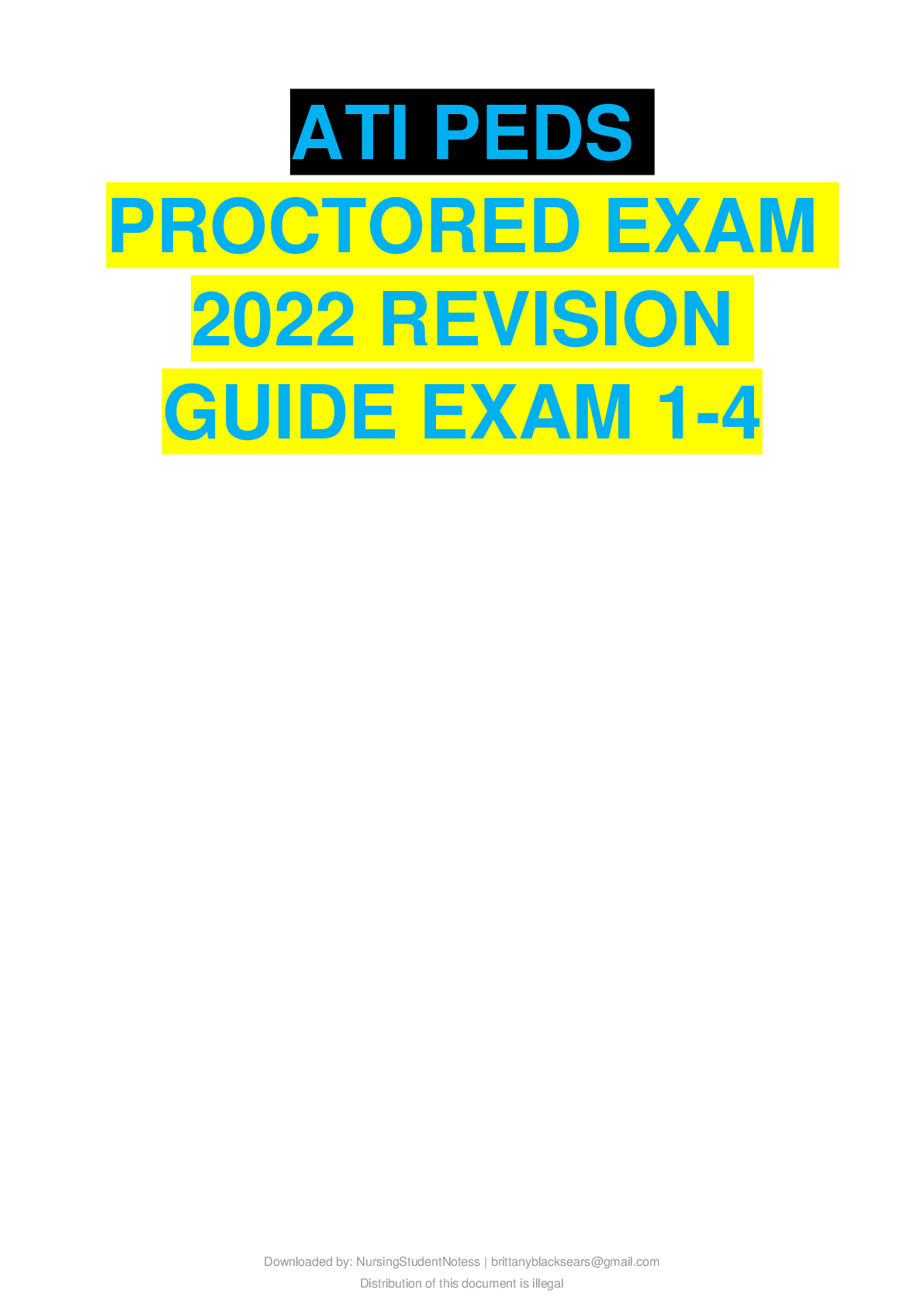


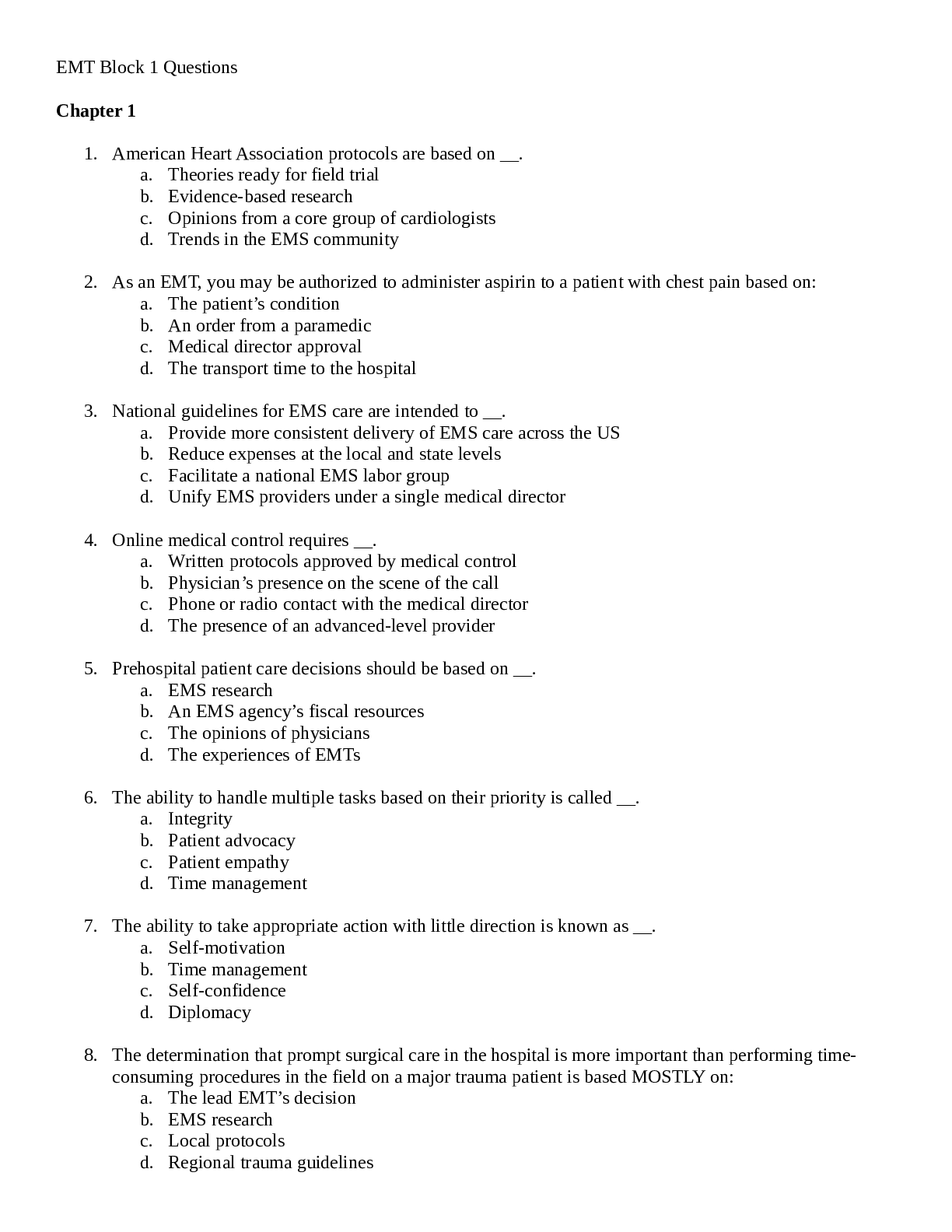
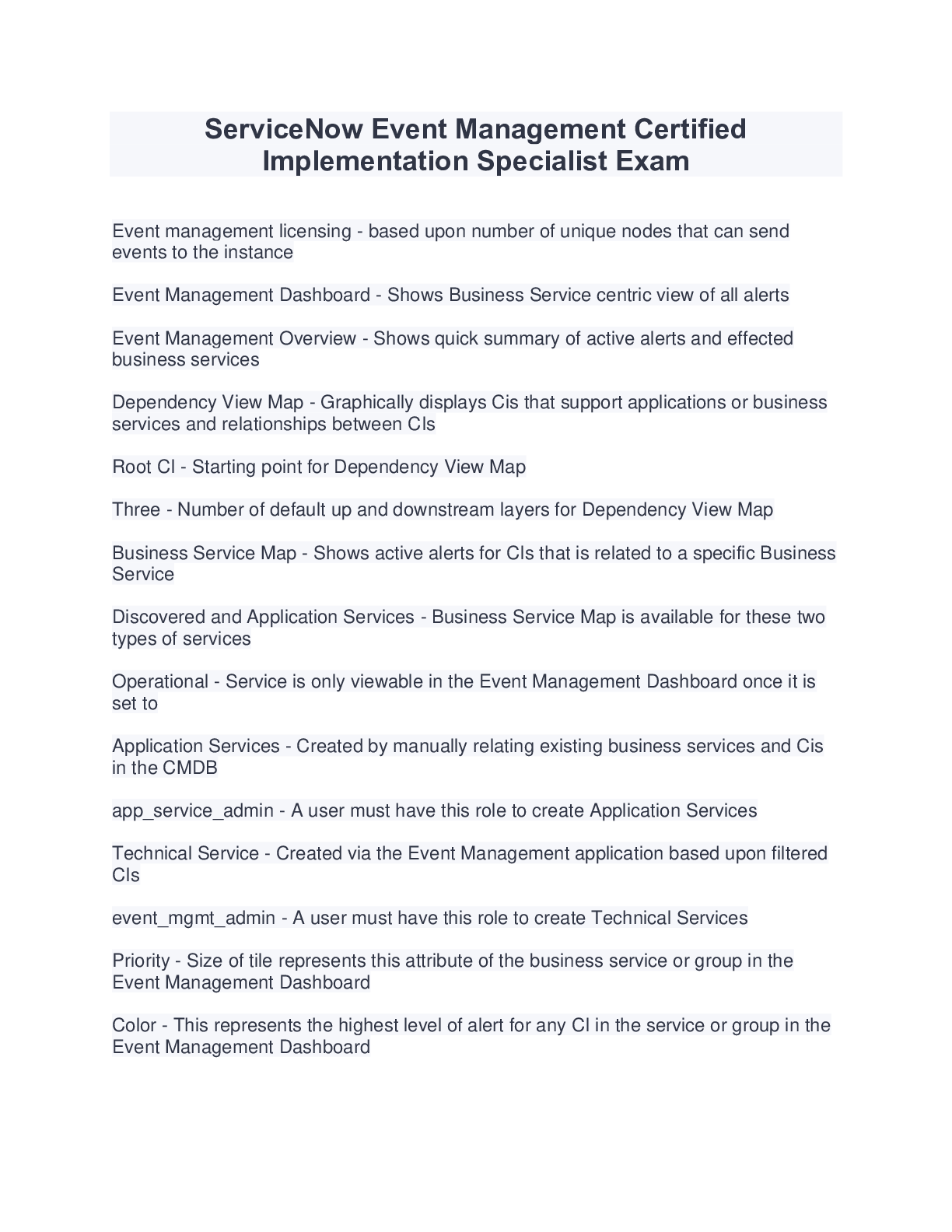

.png)

